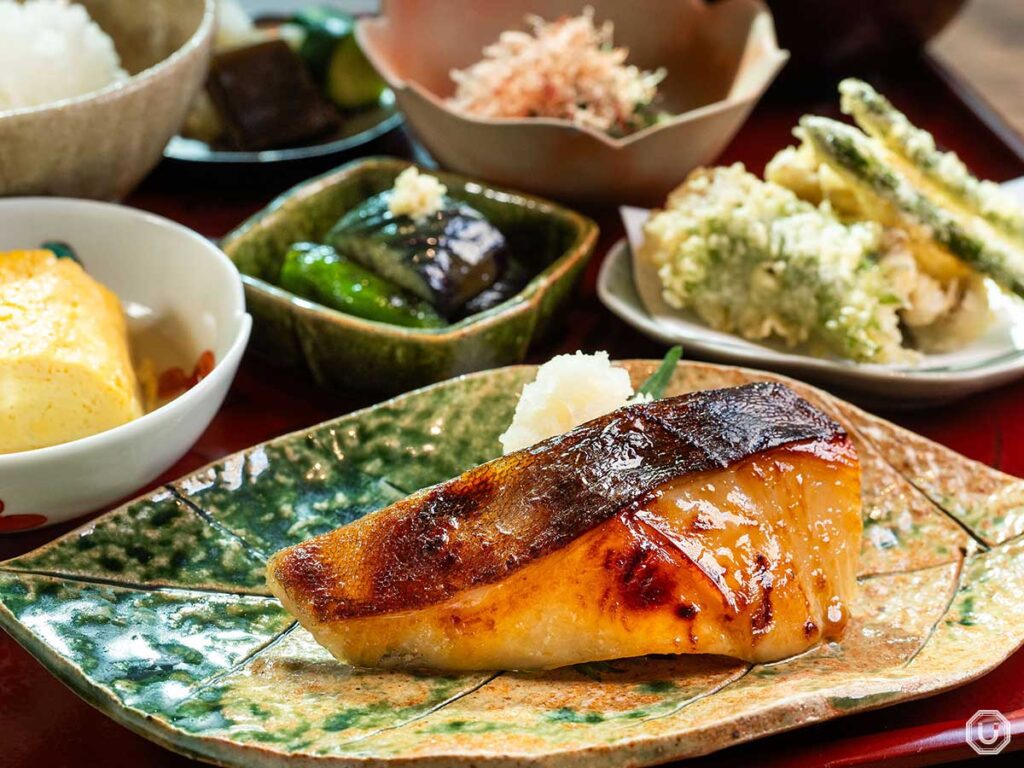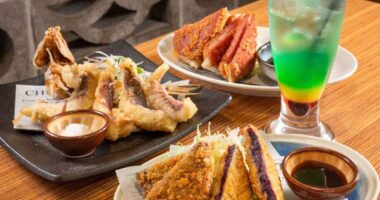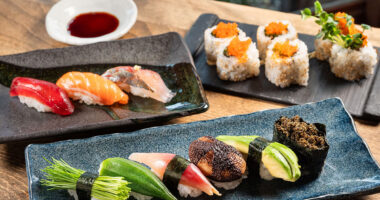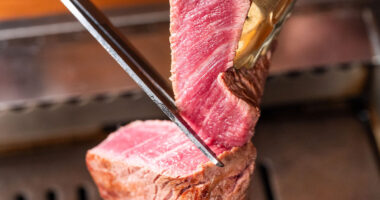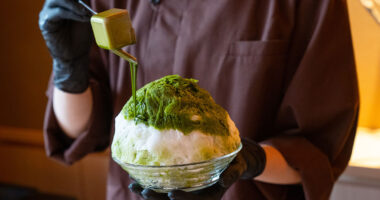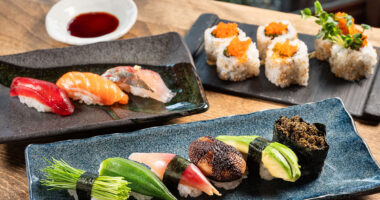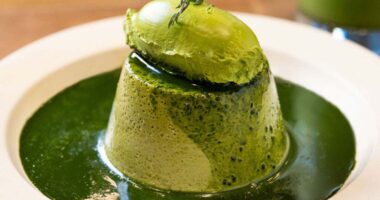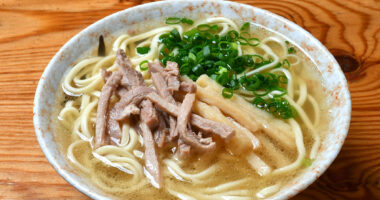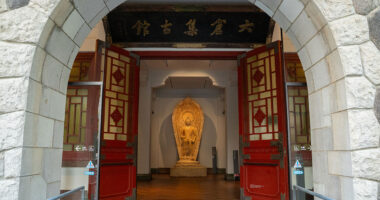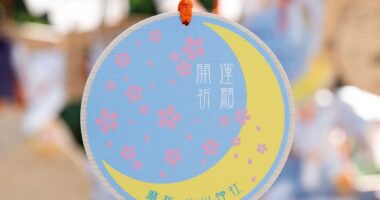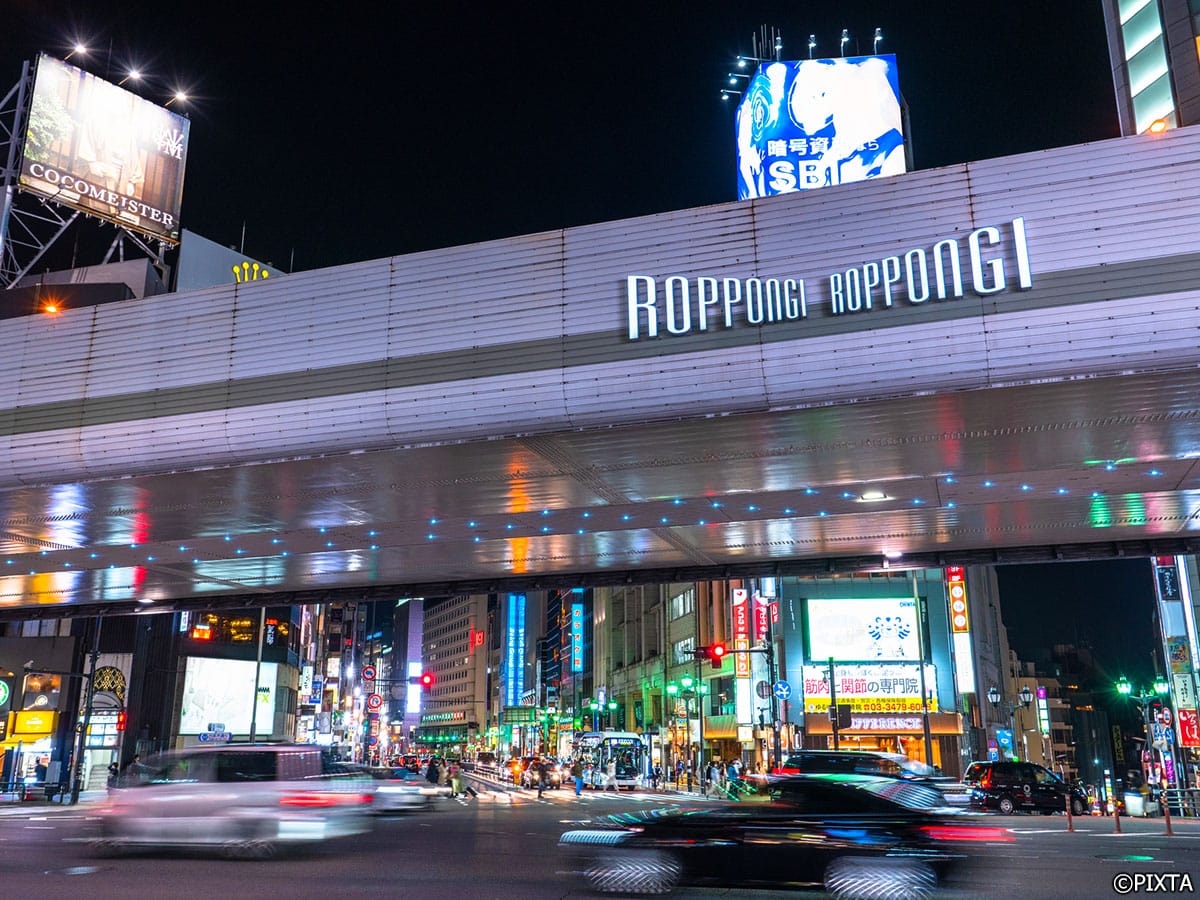Kyoto’s rich culture, spanning architecture, traditions, and culinary arts, finds a new home in Tokyo. At “Kyoto Ichinoden Roppongi Hills,” diners can delve into the essence of Kyoto’s dining culture without leaving the city.
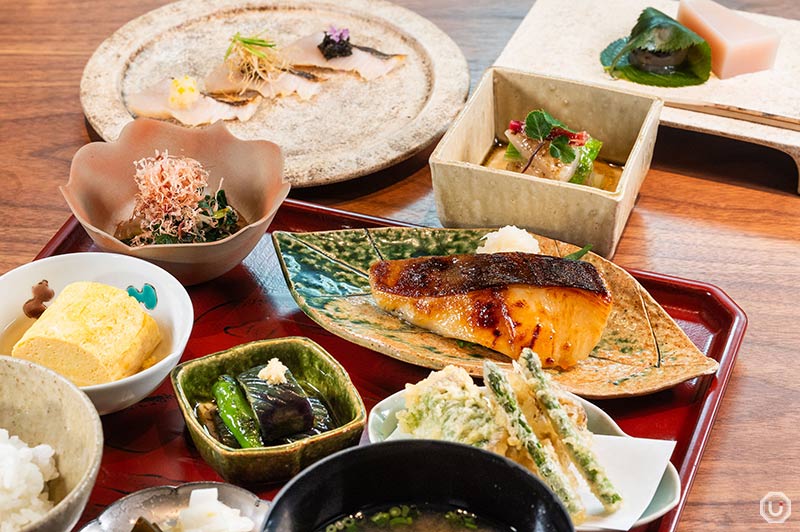
“蔵みそ焼懐石御膳,” Kura Miso-Yaki Kaiseki Gozen (available only through reservation) 5,500 JPY (tax included)
A culinary journey through the seasons
Kyoto Ichinoden, established in 1927 in Kyoto, is celebrated for its mastery of saikyōzuke. This traditional dish involves marinating fish or meat in Saikyō miso, a traditional Kyoto miso which is mild due to lower sodium content and sweet due to a generous amount of rice malt.
However, the restaurant calls their signature saikyozuke by a different name: kura misozuke (kura miso-yaki when grilled).
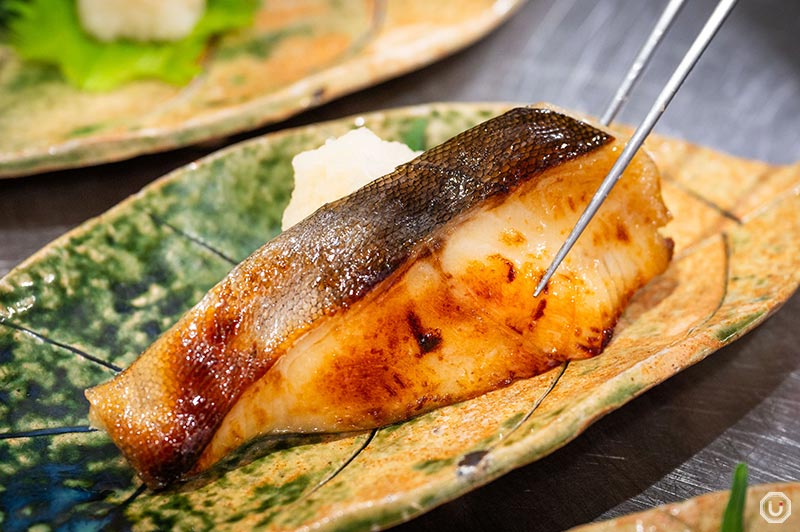
“銀だらの『蔵みそ焼』,” Grilled black cod kura miso-yaki style
The “Kura Miso-Yaki Kaiseki Gozen” allows guests to experience Kyoto culinary culture in a curated dining experience showcasing kura misozuke at its heart. The course unfolds with sakizuke (appetizer), followed by otsukuri (sashimi), then gozen (set menu meal), and concludes with mizugashi (jelly dessert).
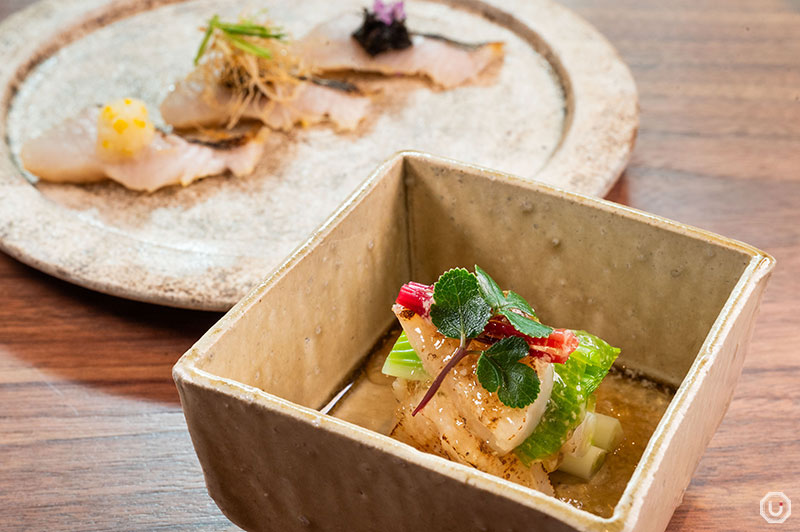
“先付け” sakizuke (front) and “造り” otsukuri (back)
Kyoto cuisine’s affinity for seasonal ingredients is evident in every dish. Kyoto Ichinoden Roppongi Hills adjusts its Kura Miso-Yaki Kaiseki Gozen menu to celebrate the freshest seasonal produce.
A highlight of the seasonal menu is the otsukuri. In March 2024, it featured straw-grilled sawara (Spanish mackerel), a fish heralding spring in Japan.
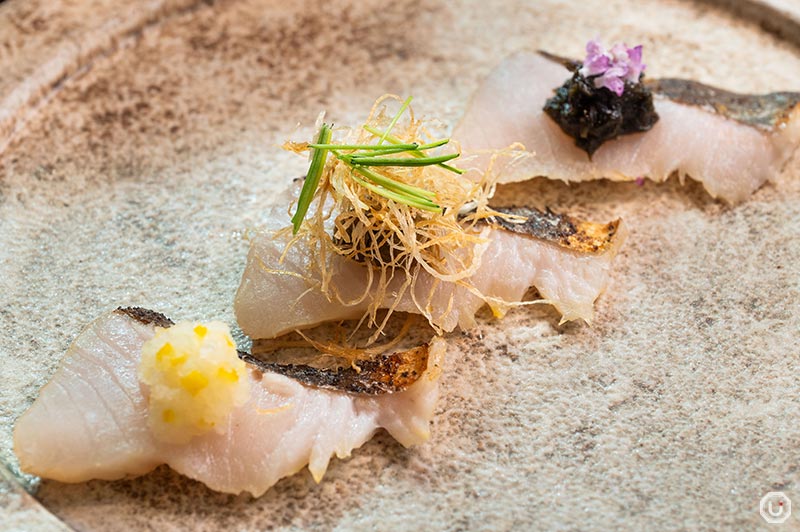
Straw-grilled sawara in Otsukuri
The straw-grilled sawara is adorned with diverse toppings. These include yuzu with grated daikon radish, miso containing fukinotō (butterbur sprouts) topped with fried Welsh onion, and a blend of aonori seaweed, wasabi and soy sauce. Each topping offers a unique taste experience.
Seasonal mizugashi include mizuyōkan sweet bean jelly and gyokukan sweet bean jelly with black beans. These desserts capture the ephemeral beauty of sakura (cherry blossoms).
This mizugashi selection, with soft pink hues and the vivid green of a sakura leaf, are a beautiful representation of Japanese spring.
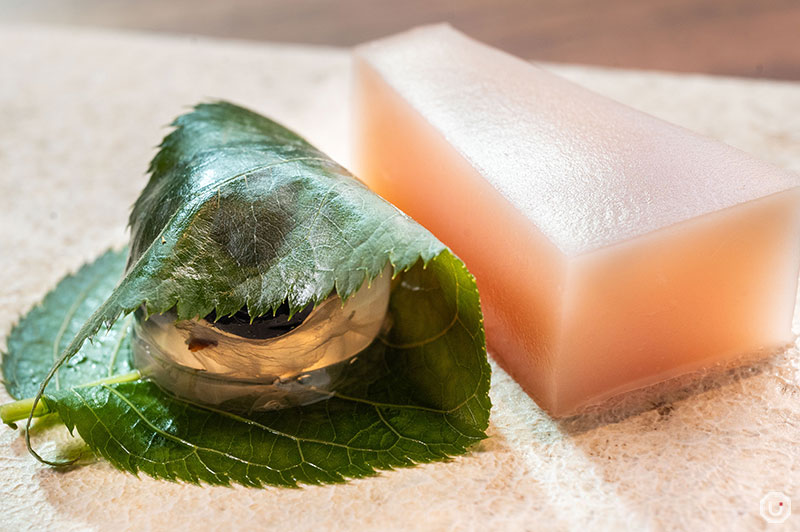
“黒豆 桜玉羹” Black bean sakura gyokukan (left) and “桜水羊羹” Sakura mizuyokan (right)
Black cod marinated in miso for a rich umami experience
The gozen (set menu meal) which follows the otsukuri in the course features a visually stunning arrangement. It includes white rice, miso soup, grilled black cod kura miso-yaki style, and a selection of side dishes, all artfully arranged on a single tray.
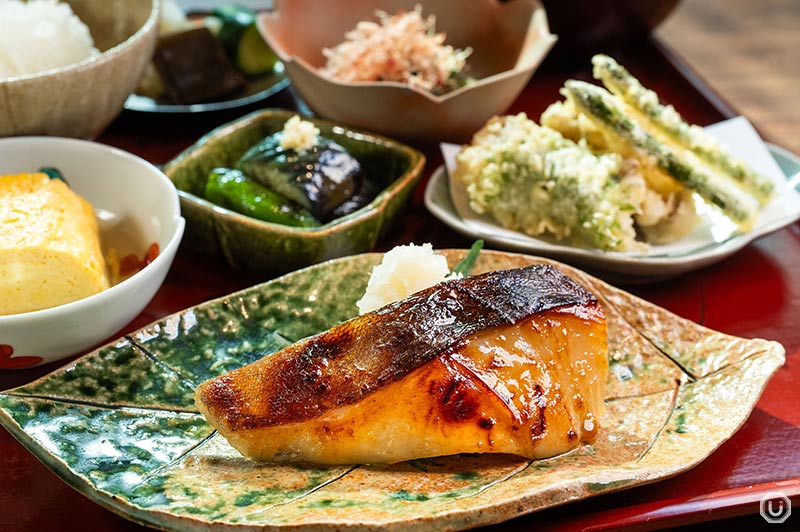
The centerpiece, grilled black cod kura miso-yaki style, is a testament to Kyoto Ichinoden’s culinary prowess.
The chefs select the perfect seasoning for the marinating mix and the marination time is customized according to the season, room temperature, and fish type. This meticulous process, marinating the black cod for two days and nights, brings out a mellow sweetness and a rich umami.
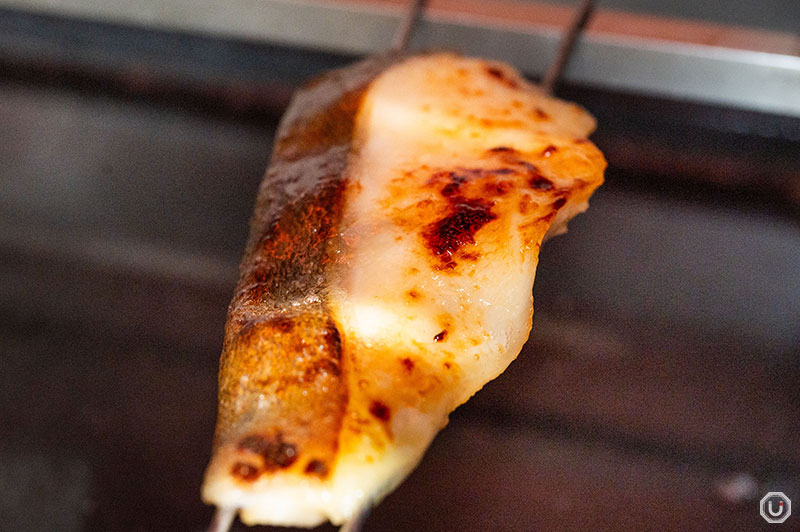
Even the grated daikon radish served alongside the main dish reflects the restaurant’s unswerving attention to detail. Kyoto Ichinoden Roppongi Hills seasons their grated daikon with vinegar, dashi, light soy sauce, and mirin, achieving a tangy flavor.
Thus, the condiment refreshes the palate after the rich taste of the grilled black cod kura miso-yaki style. Far from compromising the fish’s taste, eating them together enhances the depth of flavors of the dish.
This careful consideration right down to the condiments, seeking to perfect every bite, reveals the thoughtful attention to detail central to the restaurant’s culinary approach.
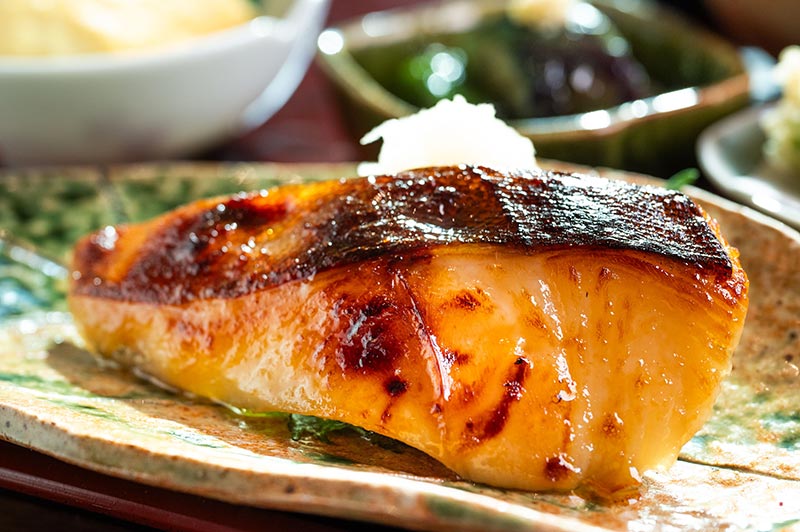
Kyoto’s essence captured in obanzai
The obanzai accompanying the grilled black cod kura miso-yaki style embodies Kyoto’s culinary heritage. Obanzai refers to Kyoto’s traditional home-cooked side dishes that focus on the inherent flavors of the ingredients.
Central to these dishes is dashi, a broth that significantly influences the taste profile not only of obanzai but of all Kyoto cuisine. The dashi at Kyoto Ichinoden Roppongi Hills is a labor of love.
The process involves simmering kombu (kelp) seaweed between 1 to 2.5 hours, then adding bonito flakes and carefully skimming off any impurities. The result is a broth that’s clear, subtly flavored, and exquisitely refined.
To truly savor the prized dashi of Kyoto Ichinoden Roppongi Hills, the recommended dish is the eggplant prepared in agebitashi, a style in which foods are fried then soaked in dashi. With each bite, the delicious dashi seeps out, filling your mouth with its savory umami.
Although the ingredients they use in the Kura Miso-Yaki Kaiseki Gozen change with the seasons, their “eggplant agebitashi” is a year-round favorite included in the kaiseki gozen menu.
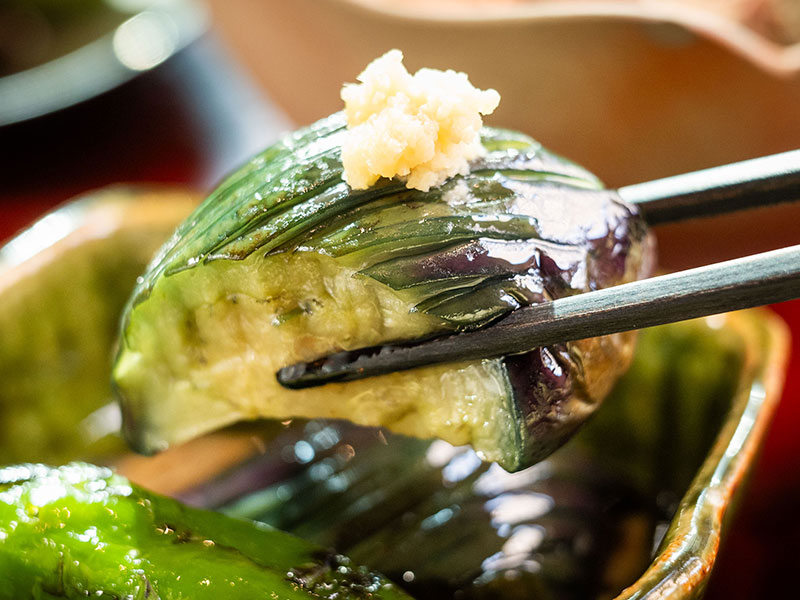
“茄子の揚げびたし,” eggplant agebitashi
Unlimited refills of select Japanese white rice
At Kyoto Ichinoden Roppongi Hills, attention to dashi and seasonal nuances in crafting the Kura Miso-Yaki Kaiseki Gozen menu is just the start. Another crucial element is ensuring that the dishes complement white rice perfectly.
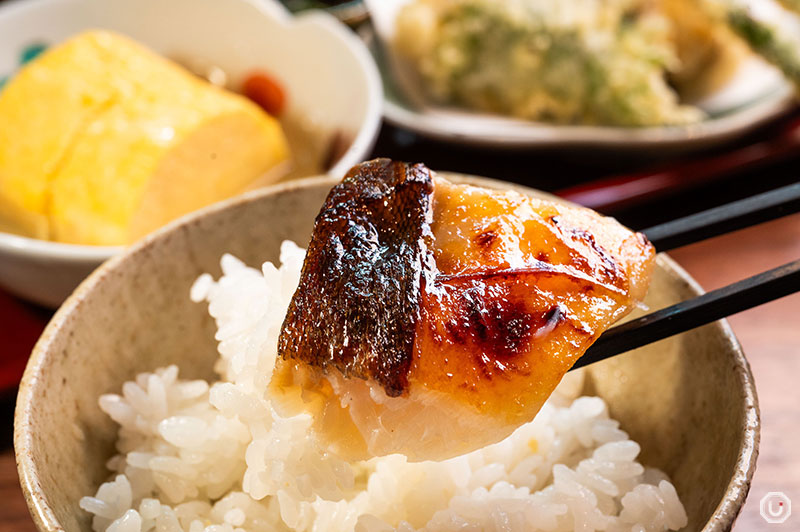
The rice is selected by a professional known as a “Five-Star Rice Meister,” who chooses premium grade rice that perfectly complements saikyozuke. Moreover, in a bid to always serve rice at its peak deliciousness, it’s freshly cooked in several batches throughout lunchtime.
Whether it’s the grilled black cod kura miso-yaki style or their obanzai offerings, the flavors are designed to keep you coming back for more. The added perk of unlimited rice refills enhances the dining experience even further.
Inside Kyoto Ichinoden Roppongi Hills: A haven of art and elegance
The restaurant’s interior is as noteworthy as its cuisine. Upon entry, guests are greeted by an imposing noren curtain printed with a bold, single brush stroke representing the kanji ichi for the number one, as featured in the restaurant’s name. It’s a piece that has become a signature photo spot and symbolizes the restaurant’s identity.
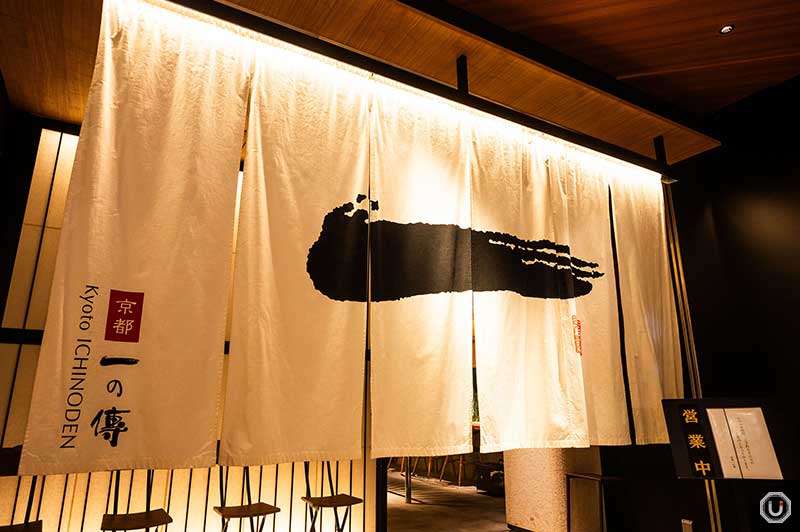
Kyoto Ichinoden Roppongi Hill’s noren curtain
The interior is thoughtfully designed to offer a serene and elegant dining experience. It is adorned with artistic decorations throughout, including artwork made with shii (Japanese Chinquapin) wood at the table seats, also representing the ichi kanji from the restaurant’s name.
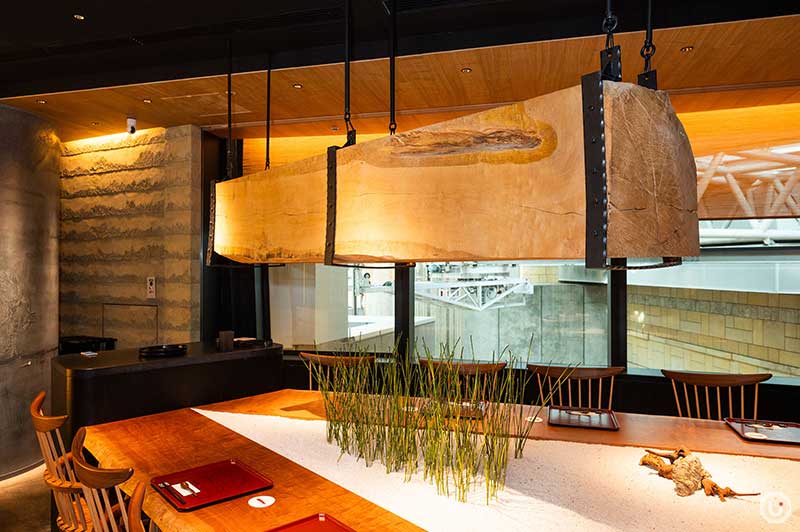
The artistically decorated interior of Kyoto Ichinoden Roppongi Hills
Additionally, the private dining room windows feature stained glass with kanji motifs. Each piece represents different fish: sea bream, Spanish mackerel, cod, and salmon.
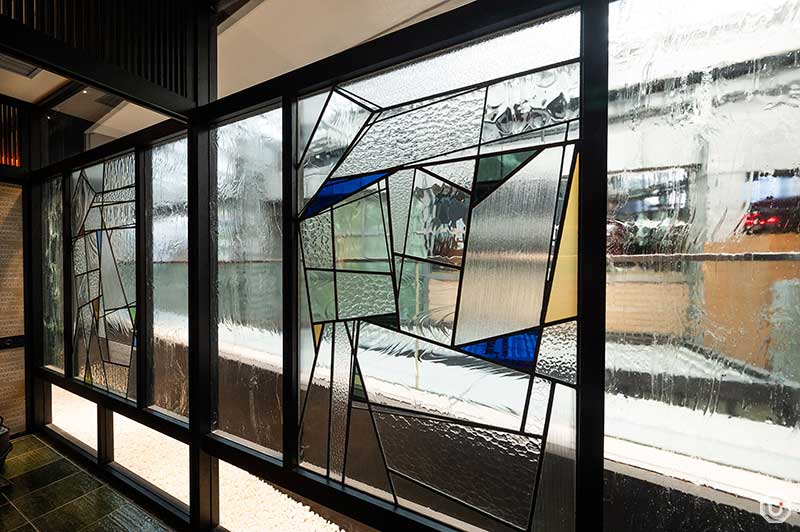
Stained glass in the private dining rooms of Kyoto Ichinoden Roppongi Hills
Services available in English for international diners
Roppongi, known for its abundance of tourist attractions, is a popular area among international visitors to Japan. Kyoto Ichinoden Roppongi Hills is committed to accommodating inbound guests, not only offering menus written in Japanese, English, and Chinese, but also providing English-speaking staff to assist them.
At Kyoto Ichinoden Roppongi Hills, you can enjoy authentic Kyoto cuisine and experience Kyoto’s food culture without leaving Tokyo. With its strong support for international diners, this restaurant is expected to become increasingly popular among tourists from abroad.
Information
| Store name | 京都一の傳 六本木ヒルズ店 Kyoto Ichinoden Roppongi Hills |
|---|---|
| Address | West Walk, Roppongi Hills 5F, 6-10-1 Roppongi, Minato-ku, Tokyo
|
| Access |
Roppongi Station 2-minute walk from Roppongi Station Nishi-Azabu Gate
|
| Phone number | 03-6432-9808 |
| Reservations | Available Phone, Tabelog, Ikyu Restaurant |
| Payment |
|
| Service charge/Table charge | 10% Dinnertime only Private dining room: 4,400 JPY room charge for parties of up to 4 people; 1,100 JPY additional per person for parties of 5 or more |
| Hours | 11:00-15:00(last order 14:30), 17:00-23:00(last order: food 21:00, drink 22:00) |
| Closed | Wednesday |
| Seating | 44 seats 12 counter seats, 20 table seats, 12 private dining room seats |
| Smoking | All seats are non-smoking |
| Official website | https://www.ichinoden.jp/ |
| Other information |
|
※Menu contents, prices, store information, etc. are current as of March 2024.
